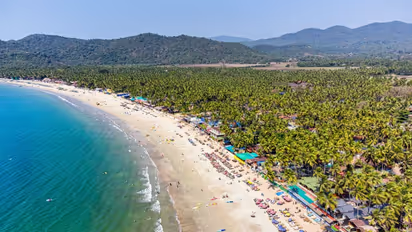From 7,516 kms to 11,098 kms: India's coastline expands by 47.6% in over 50 years, reveals MHA report

Synopsis
India’s coastline has expanded by almost 50% over the past five decades, from 7,516 kilometers in 1970 to 11,098 kilometers in 2023-24, according to a report by the Ministry of Home Affairs (MHA).
India’s coastline has expanded by almost 50% over the past five decades, from 7,516 kilometers in 1970 to 11,098 kilometers in 2023-24, according to a report by the Ministry of Home Affairs (MHA). This major increase, driven by new methods of measuring coastal accretion and erosion, has significantly altered the maritime landscape, with states like Gujarat, Bengal, and Goa showing substantial growth in their shorelines.
Gujarat recorded the most considerable expansion, with its coastline nearly doubling from 1,214 kilometers in 1970 to 2,340 kilometers in the past 53 years. Bengal experienced the highest percentage increase, with its coastline growing by 357%, from 157 kilometers to 721 kilometers. On a national scale, the coastline grew by 47.6% compared to the 1970 data.
The primary reason for this dramatic revision is the adoption of a new methodology for measuring India’s coastline, as outlined by the National Maritime Security Coordinator. Unlike older methods that used straight-line distances, the new approach incorporates the measurement of complex coastal features such as bays, estuaries, inlets, and other geomorphological formations. This updated technique provides a more accurate and precise representation of the coastline’s true length.
Tamil Nadu also saw a significant revision, with its coastline growing from 906 kilometers to 1,068 kilometers, surpassing Andhra Pradesh’s coastline of 1,053 kilometers. Kerala, on the other hand, reported the smallest increase, adding just 30 kilometers, or 5%, to its coastline.
However, Puducherry was the only region to experience a contraction in its coastline, shrinking by 10.4%, a marked departure from the trend of coastline expansion in other states and Union Territories (UTs). The total contraction amounted to a reduction of 4.9 kilometers, affecting the regions of Karaikal, Yanam, and Mahe.
The updated measurements not only provide a clearer picture of India’s coastal boundaries but also have implications for planning and development. The revised figures are critical for future coastal infrastructure projects, as they will guide the development of ports and industrial zones, as well as enhance India’s maritime economy. Andhra Pradesh, for example, is focusing on developing new ports such as Ramayapatnam, Krishnapatnam, and Kakinada Gateway, which are expected to drive economic growth, increase employment opportunities, and boost industrialization and urbanization along its coast.
India’s coastline spans across nine coastal states—Gujarat, Maharashtra, Goa, Karnataka, Kerala, Tamil Nadu, Andhra Pradesh, Odisha, and Bengal—and four Union Territories: Daman & Diu, Lakshadweep, Puducherry, and the Andaman & Nicobar Islands. Together, these regions play a vital role in India’s economy, contributing to trade, tourism, and biodiversity preservation.
Stay updated with the Breaking News Today and Latest News from across India and around the world. Get real-time updates, in-depth analysis, and comprehensive coverage of India News, World News, Indian Defence News, Kerala News, and Karnataka News. From politics to current affairs, follow every major story as it unfolds. Get real-time updates from IMD on major cities weather forecasts, including Rain alerts, Cyclone warnings, and temperature trends. Download the Asianet News Official App from the Android Play Store and iPhone App Store for accurate and timely news updates anytime, anywhere.